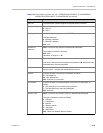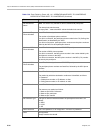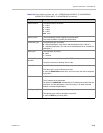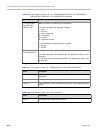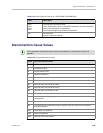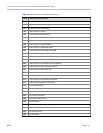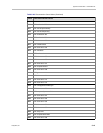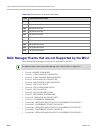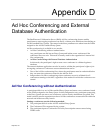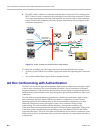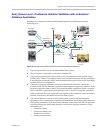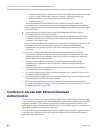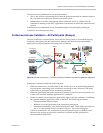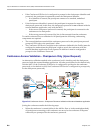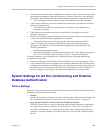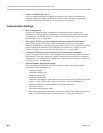
Polycom, Inc. D-1
Appendix D
Ad Hoc Conferencing and External
Database Authentication
The RealPresence Collaboration Server (RMX) Ad Hoc conferencing feature enables
participants to start ongoing conferences on-the-fly, without prior definition when dialing an
Ad Hoc-enabled Entry Queue. The created conference parameters are taken from the Profile
assigned to the Ad Hoc-enabled Entry Queue.
Ad Hoc conferencing is available in two modes:
• Ad Hoc Conferencing without Authentication
Any participant can dial into an Entry Queue and initiate a new conference if the
conference does not exist. This mode is usually used for the organization’s internal Ad
Hoc conferencing.
• Ad Hoc Conferencing with External Database Authentication
In this mode, the participant’s right to start a new conference is validated against a
database.
The external database application can also be used to validate the participant’s right to join
an ongoing conference. Conference access authentication can be:
• Part of the Ad Hoc conferencing flow where the participants must be authorized before
they can enter the conference created in the Ad Hoc flow.
• Independent of Ad Hoc conferencing where conference access is validated for all
conferences running on the MCU regardless of the method in which the conference was
started.
Ad Hoc Conferencing without Authentication
A participant dials in to an Ad Hoc-enabled Entry Queue and starts a new conference based
on the Profile assigned to the Entry Queue. In this configuration, any participant connecting
to the Entry Queue can start a new conference, and no security mechanism is applied. This
mode is usually used in organizations where Ad Hoc conferences are started from within the
network and without security breach.
Starting a conference uses the following method:
1 The participant dials in to the Ad Hoc-enabled Entry Queue.
2 The Conference ID is requested by the system.
3 The participant inputs a Conference ID via his/her endpoint remote control using
DTMF codes.



